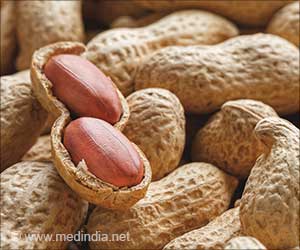Dietary Approach to Stop Hypertension dietary pattern appears to show smaller gains in overall body mass index (BMI) in adolescent girls, finds report.

Jonathan P. B. Berz, M.D., M.Sc., of Boston University Medical Center, and colleagues evaluated the effects of a DASH-style eating plan on BMI (calculated as weight in kilograms divided by height in meters squared) in a racially diverse sample of adolescent girls. The authors examined data from 2,237 girls 9 years of age who participated in the National Growth and Health Study from 1987-1988 and were followed up for 10 years. Data were gathered annually and each participant was given a DASH food group score based on individual adherence to dietary requirements.
Higher DASH scores were associated with higher total energy intake, as well as higher average intake from each food group (whole grains, vegetables, fruits, lean meats, low-fat dairy and nuts/seeds/legumes). Girls in the highest quintile of DASH scores had the smallest gains in BMI during the study, and had the lowest BMIs at the end of follow-up. Conversely, at age 19 years, girls in the lowest DASH score quintile had an average BMI that was greater than the threshold for overweight as defined by the 85th percentile for age.
"In particular, higher consumption of fruits, whole grains and low-fat dairy products led to less weight gain," the authors noted. Participants who consumed two or more servings of fruit per day had the smallest gains in BMI during the study years and had the lowest BMI at the end of follow-up. Compared with participants consuming the least amount of whole grains, those who consumed the most had lower BMI scores over time and a lower BMI at the end of follow-up. The same results were seen for girls consuming higher amounts of low-fat dairy products.
"We found that higher adherence to a DASH-style diet resulted in a consistently lower BMI between the ages of 9 and 19 years," the authors conclude. "Such an eating pattern may help prevent excess weight gain during adolescence."
In an accompanying editorial, Robert C. Klesges, Ph.D. and Marion Hare, M.D., of the University of Tennessee Health Science Center, Memphis, Tenn., comment on the findings of this study. "As Berz et al point out, the DASH diet has been well validated in adults, and there is absolutely no reason for it to not work in children," they write. "The DASH diet is flexible and should meet the food preferences of most children. However, interventions for children need to be simplified; therefore, it make sense to specifically recommend increased consumption of fruits and low-fat dairy products."
Advertisement
Source-Eurekalert















